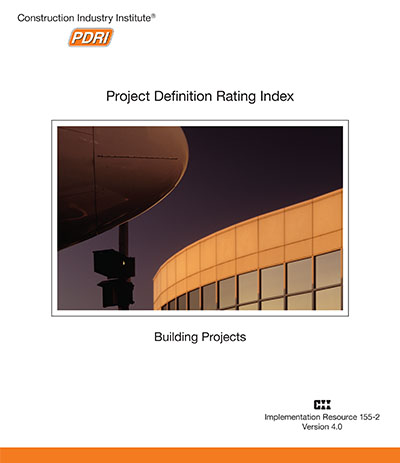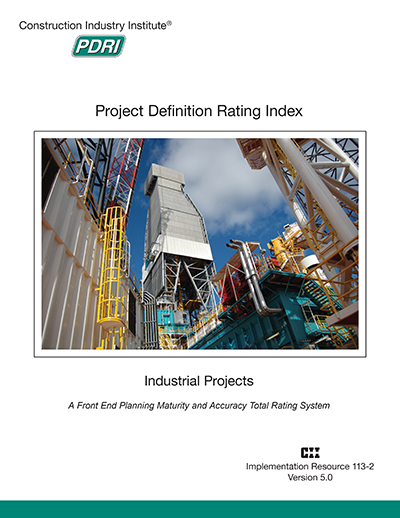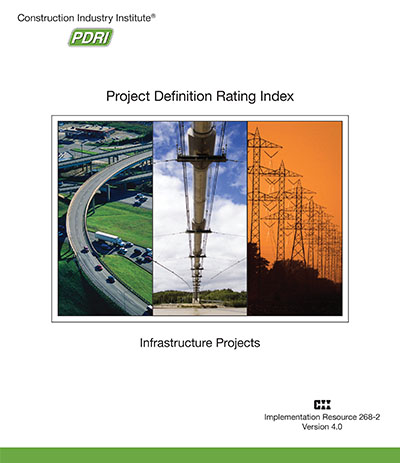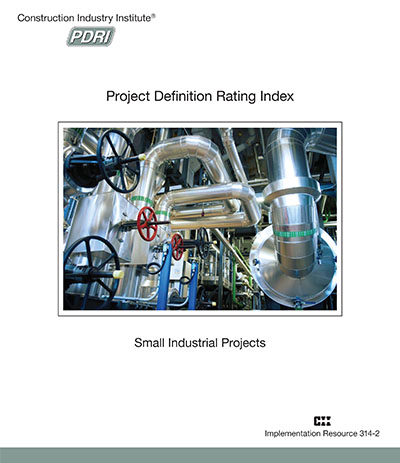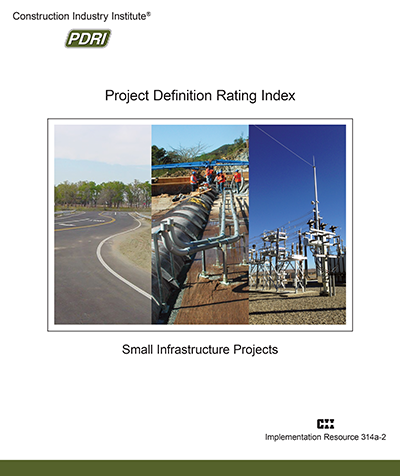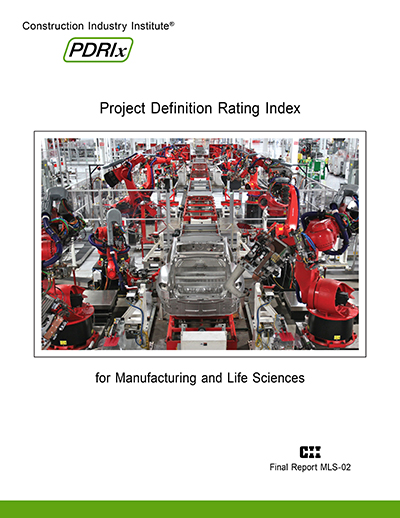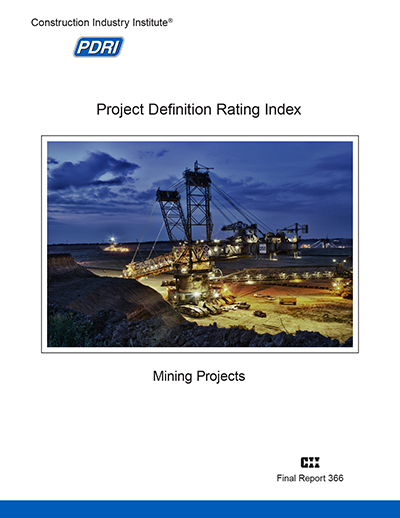Project Definition Rating Index (PDRI) Overview
The PDRI is intended for use during front end planning (FEP), the project phase that encompasses activities such as feasibility, concept, and detailed scope definition. (See Figure 1.)
Note that “front end planning” has many other equivalent and associated terms, including “front end loading,” “advance planning,” “pre-project planning,” “programming,” “schematic design,” “design development,” and “sanctioning.” Although the term “front end planning” is used in this document, it should be considered synonymous with the analogous term that is more familiar within the user’s business process. (More detailed information on timing and process is provided below.) Although the original PDRI was envisioned as a decision-support metric for funding detailed design and project execution at Phase Gate 3, experience has shown that, depending on project size and complexity, PDRI should be used more than once prior to arriving at this gate.

Which PDRI is best for this project?
Table 1 lists practical applications for each version of the PDRI, so users can decide which versions apply best to their particular projects. For further clarification, Table 2 summarizes the main characteristics of infrastructure, building, and industrial projects. Together, these tables can guide the selection of the most appropriate PDRI for any project under consideration.
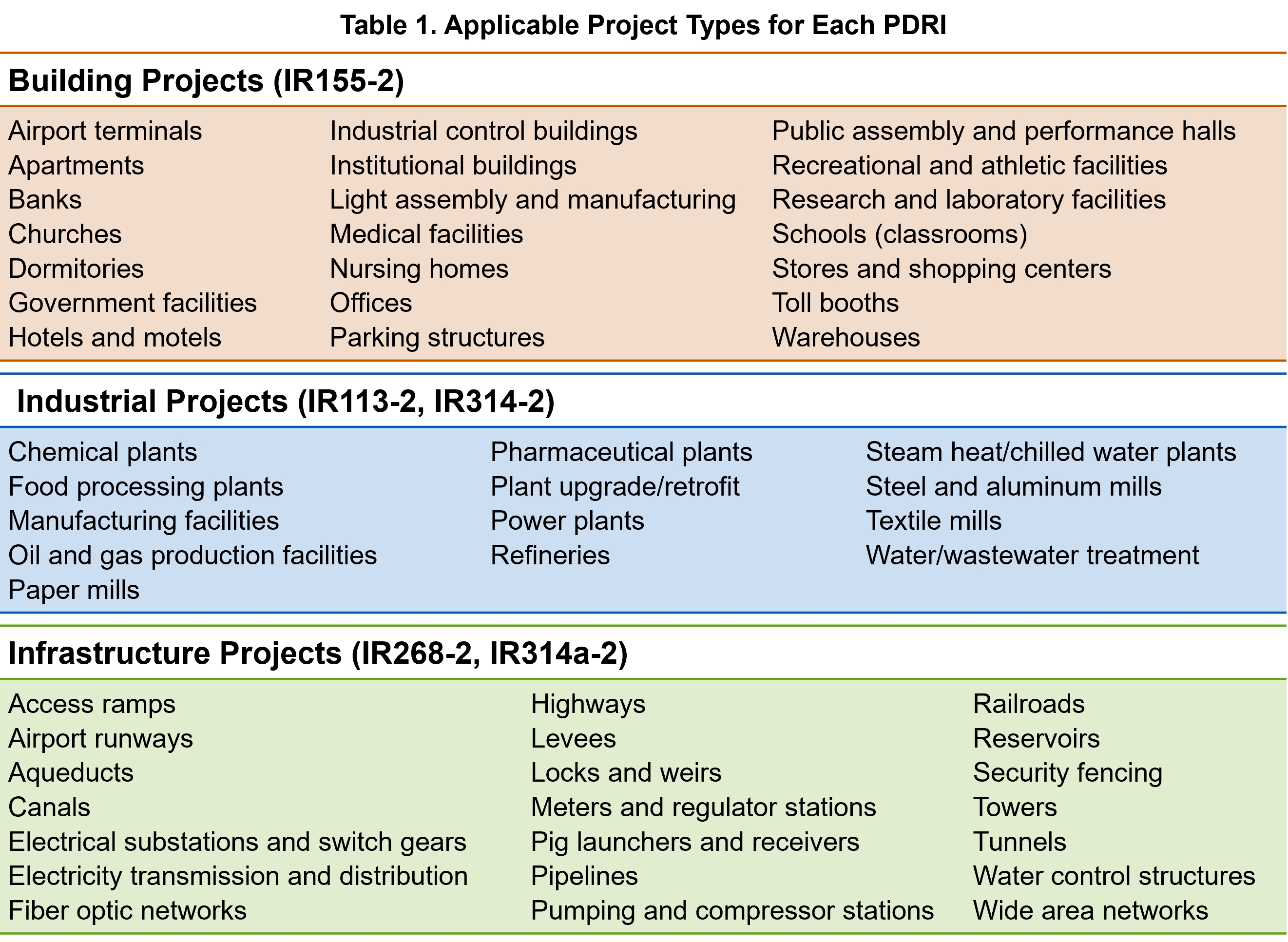

Original PDRIs
Each of these three resources complements the others and will be applicable to most capital projects being constructed today, both new construction and renovation projects.
PDRIs for Small Projects
IR314-2 defines small industrial projects as those generally with less than $10 million (U.S. dollars) in expenditures, three to six months in construction duration, and less overall complexity than large projects based on several indicators; these projects annually comprise more than 70 percent of all completed projects by number in most organizations’ portfolios.
IR314a-2 defines small infrastructure projects as those generally with less than $20 million (in U.S. dollars) in expenditures, six to 12 months in construction duration, and less overall complexity than large projects based on several indicators; these projects annually comprise approximately 50 percent of all completed projects by number in most organizations’ portfolios.
CII has not commissioned a research team to develop a PDRI for Small Building Projects.
PDRI for Specialized Projects
Each of these resources identifies several new PDRI elements to address critical scope definition needs of its particular specialized project type.
Planning Related Events
In general, if the primary designers for the project are architects, then the PDRI for Buildings should be used. If the primary designers are process (chemical) engineers or industrial (mechanical) engineers, then the PDRI for Industrial Projects should be used. Alternatively, the team can look at the composition of the project in terms of work (design or construction expenditures) to make the decision. In some circumstances, the team may decide to use both in concert.
Many industrial facilities (chemical plants or refineries) require various types of buildings to support the operations and maintenance effort, such as the following:
- administration buildings
- warehouses
- control buildings
- maintenance facilities
- laboratories
- security facilities
- training centers
Another example would be that of a building used for research or office space. Some of the space in the facility may be designated for production, including engineered equipment, process flows, and dedicated utility requirements. The Building PDRI would be used to plan the major portion of the facility, but the Industrial PDRI could be used to help plan the production space. At a minimum, the Industrial PDRI could be used as a checklist in this situation.

